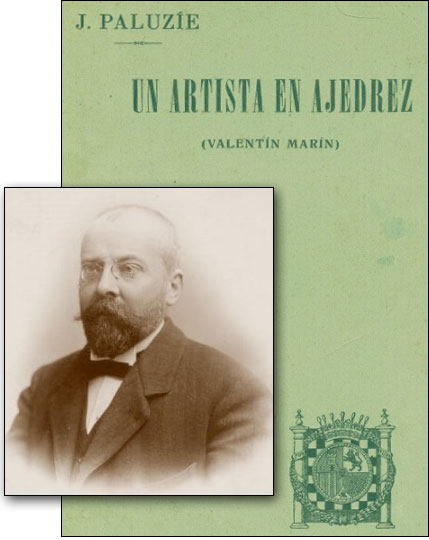The telephone rang. Of course I knew who it was at the other end — a friend of mine has recently taken to chess problems and spends a good deal of time solving them. The latest set of problems that appeared on the ChessBase news page had him baffled.
“I can't solve even one of them. Are you sure that these positions are right? Maybe a pawn or two needs to be added?!”
“Easy, easy,” I replied. “The positions are right. But did you listen to the pieces?”
“Of course I did. They are complaining, they can’t find mate.”
“You should have asked the one who was silent!”
“Who is that?”
“Who else but Her Majesty?”
Here we go again. You can move the pieces on the board to analyse lines. The full solutions to all three problems are given in the game viewer at the bottom of this page.
As you can see both white rooks would be happy to deliver mate after a discovered check. At the moment they can’t, with their own lives threatened by the black queen and the rook. So what is the way? Block the lines of these adversaries. Once you do that, the lines for the white rooks are easily opened. There steps in Her Majesty.
1.♕c3! The composition bears a striking resemblance to the three-mover that fascinated Kramnik and Anand, as described in this ChessBase report by Sagar Shah.
Now let us try the second problem:
In this position the black monarch is surrounded by as many as three white pieces. Still there is no mate. The tempting 1.♗a5? allows 1…♚c5 and the king runs away. So it’s this escape route via diagonal a7-g1 that needs to be blocked. At first sight this appears impossible. None of the white pieces can venture into the field without being captured.
As in the first problem, here also Her Majesty storms her way in. She goes into a deep dive with 1.♕e2! If Black captures the venturesome queen, it will release either the d-pawn or the knight for mate. They also serve who stand and wait as Milton once wrote. The humble pawn on d2 did have the last word on this occasion.
Now we come to the last position.
At first sight mate in this problem does not appear to be a big issue at all. Surely, White has to advance the g-pawn and once it’s promoted to queen it should be all over for Black. The trouble is that it takes more than the stipulated mate in four moves. So the g-pawn here is only a red herring.
Why not mate the black king nearer home? If only White could play 1.♖c1 followed by ♖h1+, it would be all over. Sadly, the black bishop is just not allowing it, and our rook itself is under serious threat. So Her Majesty returns home to lift the siege with 1.♕a1! If 1…♝xa1 2.♖f1 and soon mate follows. That’s the easier part. However, Black can offer tougher resistance with 1…♜xd3. Then begins the duel in earnest.
We have come to the end of our journey. As is known, Valentin Marin composed more than 250 problems. Connoisseurs of his work might object to the choice of the problems here. They would maintain, there is too much striving for “effect”. Valentin Marin also composed deep and subtle problems with quiet moves. In their view such problems are more worthy of attention. Some day let us see them too.
Replay and analyse all solutions
As of now, only one reader who goes by the mysterious name, “angiewei” has successfully solved all the three problems. Much appreciated.
Notes
-
 It would not be out of place to point out here that it was José Paluzíe who had a decisive influence on Valentin Marin’s chess thought and creativity. He was impressed by the talent of the young man and encouraged him in every possible way. In 1913 his publishing house released a collection of Valentin Marin’s problems under an impressive title, Un artista en ajedrez (An artist in chess).
It would not be out of place to point out here that it was José Paluzíe who had a decisive influence on Valentin Marin’s chess thought and creativity. He was impressed by the talent of the young man and encouraged him in every possible way. In 1913 his publishing house released a collection of Valentin Marin’s problems under an impressive title, Un artista en ajedrez (An artist in chess).
-
As mentioned before, the Spanish chess blog, Ajedrez 365 offers the best possible introduction to Valentin Marin’s work.
-
Pedro Cañizares Cuadra rendered a yeoman service to the chess world, collecting all available problems composed by Valentin Marin. They may be obtained here.



















 It would not be out of place to point out here that it was José Paluzíe who had a decisive influence on Valentin Marin’s chess thought and creativity. He was impressed by the talent of the young man and encouraged him in every possible way. In 1913 his publishing house released a collection of Valentin Marin’s problems under an impressive title, Un artista en ajedrez (An artist in chess).
It would not be out of place to point out here that it was José Paluzíe who had a decisive influence on Valentin Marin’s chess thought and creativity. He was impressed by the talent of the young man and encouraged him in every possible way. In 1913 his publishing house released a collection of Valentin Marin’s problems under an impressive title, Un artista en ajedrez (An artist in chess).




